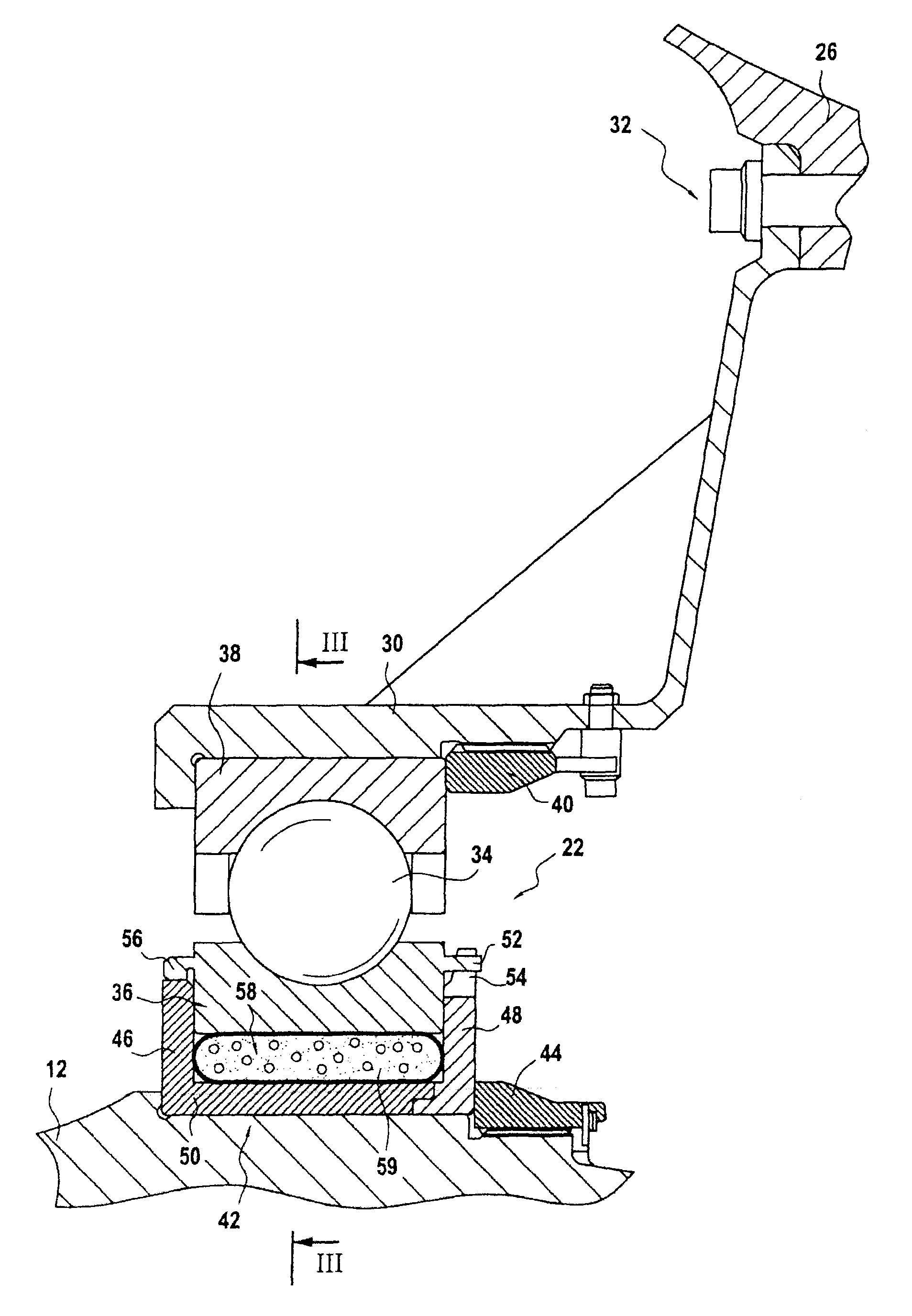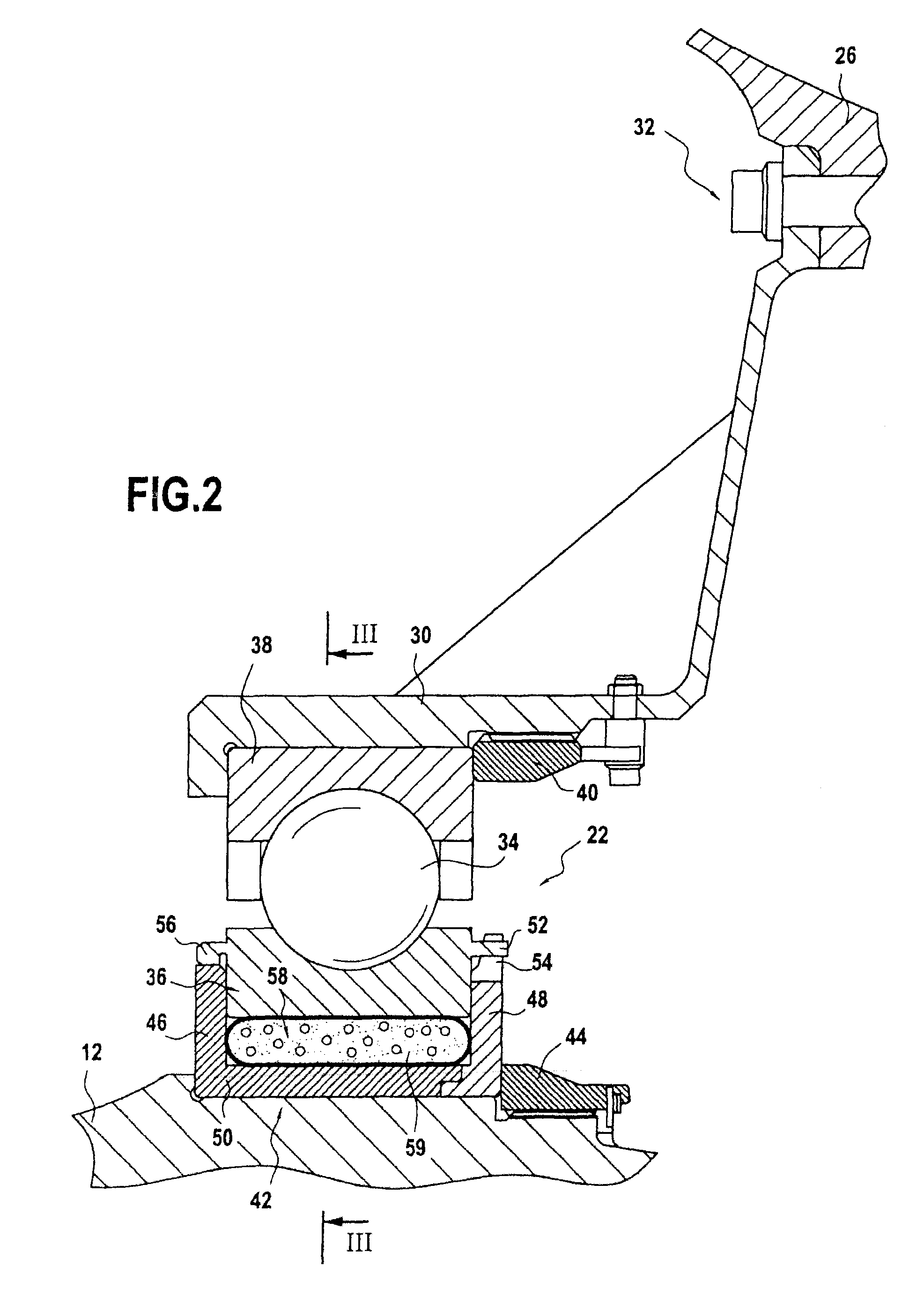Uncoupling system for an aircraft turbojet engine rotary shaft
- Summary
- Abstract
- Description
- Claims
- Application Information
AI Technical Summary
Benefits of technology
Problems solved by technology
Method used
Image
Examples
first embodiment
[0028]There follows initially a description of such a decoupling system, given with reference to FIGS. 2 and 3.
[0029]The rear bearing 22 has a plurality of balls 34 that are inserted between an inner ring 36 arranged beside the low-pressure shaft 12 and an outer ring 38 arranged beside the rear bearing support 30, these rings defining raceways for the balls. More precisely, the outer ring is fastened to the rear bearing support 30 by means of a nut 40.
[0030]The inner ring is mounted in an annular mounting chamber 42 that is an interference fit on the low-pressure shaft and that is axially fastened thereon by a nut 44. The mounting chamber 42 presents an upstream wall 46 that is axially spaced apart from a downstream wall 48 by a bottom wall 50.
[0031]In order to enable rotary torque to be transmitted from the low-pressure shaft to the inner ring of the rear bearing, the ring includes a plurality of lugs 52 co-operating with corresponding teeth 54 formed at the free end of the downstr...
second embodiment
[0042]This second embodiment differs from the first in particular in that the inner ring 36′ of the rear bearing 22′ has a flange 60 that extends axially upstream and that is fastened to a corresponding flange 62 of the mounting chamber 42′ (this flange 62 extends axially upstream from the end of the upstream wall 46′ of the mounting chamber). These flanges 60 and 62 are fastened to each other by means of a nut-and-bolt system 64 and they form a flexible connection system that allows the inner ring to move radially relative to the mounting chamber. This flexible connection 60, 62 also enables the inner ring to be centered radially on the mounting chamber and to take up the axial forces generated by the thrust.
[0043]In this second embodiment, since no mechanical breakage occurs in the connection between the inner ring and the mounting chamber in the event of a fan blade being lost, it is necessary to take account of the flexibility of the connection 60, 62 when determining the charac...
PUM
 Login to View More
Login to View More Abstract
Description
Claims
Application Information
 Login to View More
Login to View More - R&D
- Intellectual Property
- Life Sciences
- Materials
- Tech Scout
- Unparalleled Data Quality
- Higher Quality Content
- 60% Fewer Hallucinations
Browse by: Latest US Patents, China's latest patents, Technical Efficacy Thesaurus, Application Domain, Technology Topic, Popular Technical Reports.
© 2025 PatSnap. All rights reserved.Legal|Privacy policy|Modern Slavery Act Transparency Statement|Sitemap|About US| Contact US: help@patsnap.com



